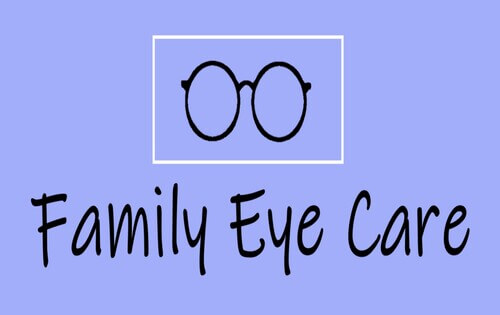Andalusia Pediatrics Clinics: Dedicated Look After Your Child's Health
The Advantages And Disadvantages of Various Refractive Surgical Procedures for Improved Eyecare

LASIK Surgical Procedure
LASIK surgical treatment is a frequently carried out refractive treatment that intends to deal with vision issues such as farsightedness, nearsightedness, and astigmatism. During the treatment, a slim flap is produced on the cornea, and a laser is used to improve the underlying tissue, fixing the refractive mistake.
Among the main advantages of LASIK surgical treatment is the fast renovation in vision experienced by several individuals. Many individuals notice a substantial improvement in their eyesight shortly after the procedure, with very little downtime required for healing. In addition, LASIK is known for its high success price and low incidence of complications when done by experienced specialists. Nevertheless, like any surgery, LASIK also lugs some risks, including completely dry eyes, glow, halos, and under or overcorrection of vision. It is important for individuals thinking about LASIK surgery to undertake a thorough examination by an eye treatment professional to figure out if they are appropriate prospects for the treatment.
PRK Procedure
The PRK procedure, likewise understood as Photorefractive Keratectomy, is a type of refractive surgical procedure that aims to remedy vision concerns comparable to LASIK surgical treatment. Unlike LASIK, which involves producing a flap in the cornea, PRK functions on the surface layer of the cornea.
One of the advantages of PRK over LASIK is that it removes the threat of flap-related difficulties given that no flap is developed throughout the surgical treatment. This can be useful for individuals with slim corneas or those involved in call sporting activities where eye injury is an opportunity. The recuperation time for PRK is commonly longer contrasted to LASIK, as the outer layer of the cornea requires time to restore after the procedure. Regardless of the longer recuperation period, PRK can be an ideal choice for individuals looking for vision adjustment surgery.
SMILE Surgery
An advanced refractive surgical procedure method acquiring popularity in the field of ophthalmology is SMILE Surgical treatment. Little Laceration Lenticule Extraction (SMILE) is a minimally invasive procedure that deals with vision by improving the cornea utilizing a femtosecond laser. Unlike typical LASIK surgical procedure, SMILE Surgical procedure includes developing a small cut in the cornea to remove a lenticule, which leads to much less disturbance to the corneal framework and potentially much faster healing times.
One of the primary advantages of SMILE Surgical treatment is its capability to deal with nearsightedness (nearsightedness) and astigmatism with high precision, leading to outstanding aesthetic results for patients. The minimally invasive nature of the treatment also minimizes the risk of problems such as completely dry eye disorder, making it a beneficial choice for people seeking refractive surgery.

LASEK Technique
Having actually explored the advantages and factors to consider of SMILE Surgical procedure, another notable refractive surgical treatment method worth taking a look at is the LASEK Technique. LASEK, which stands for Laser-Assisted Subepithelial Keratectomy, is a type of laser eye surgery that aims to remedy refractive errors such as nearsightedness (nearsightedness), hyperopia (farsightedness), and astigmatism.
Unlike LASIK, LASEK does not entail developing a corneal flap. Rather, throughout a LASEK treatment, the cosmetic surgeon utilizes a watered down alcohol remedy to loosen the thin outer layer of the cornea, understood as the epithelium. This layer is after that carefully moved apart to enable the laser to improve the underlying corneal cells. When the cornea has actually been improved to the desired degree, the epithelial layer is repositioned.
Among the main benefits of LASEK is that it can be ideal for individuals with slim corneas that may not be great prospects for LASIK. Additionally, LASEK commonly results in marginal post-operative discomfort and a quicker healing time compared to PRK. Nonetheless, the aesthetic recuperation process with LASEK might be somewhat longer than with LASIK.
Implantable Call Lenses
Implantable Call Lenses supply a long-lasting vision adjustment remedy for individuals seeking an option to conventional call lenses or glasses. These lenses, also recognized as phakic intraocular lenses, are operatively put into the eye to deal with refractive errors such as nearsightedness (nearsightedness), hyperopia (farsightedness), and astigmatism. eye center andalusia. Unlike typical get in touch with lenses that remain on the surface area of the eye, implantable get in touch with lenses work within the eye itself, supplying clear vision without the need for everyday upkeep or removal
Among the essential advantages of implantable call lenses is their durability. Once put, they can continue to be in the eye indefinitely, supplying stable and regular vision correction. Furthermore, these lenses can be a superb choice for individuals that are not excellent prospects for laser eye surgical procedure or who favor a reversible vision adjustment treatment.
However, implantable contact lenses do bring some dangers, including the capacity for cataracts or raised eye stress. It is essential for individuals considering this choice to talk to an eye care expert to figure out look at here if implantable contact lenses are the ideal selection for their specific demands and eye health.
Conclusion
Finally, each kind of refractive surgery has its own advantages and disadvantages. LASIK surgical procedure is preferred for its fast recuperation time, while PRK procedure might be appropriate for clients with slim corneas. SMILE surgical treatment provides minimal pain throughout the treatment, however LASEK technique might have a longer healing process. Implantable get in touch with lenses give an option for those that are not ideal prospects for typical surgical procedures. People must speak with their eye treatment copyright to establish the very best alternative for their private needs.

Generally, SMILE Surgical procedure presents a promising choice for individuals looking to improve their vision via refractive surgery.